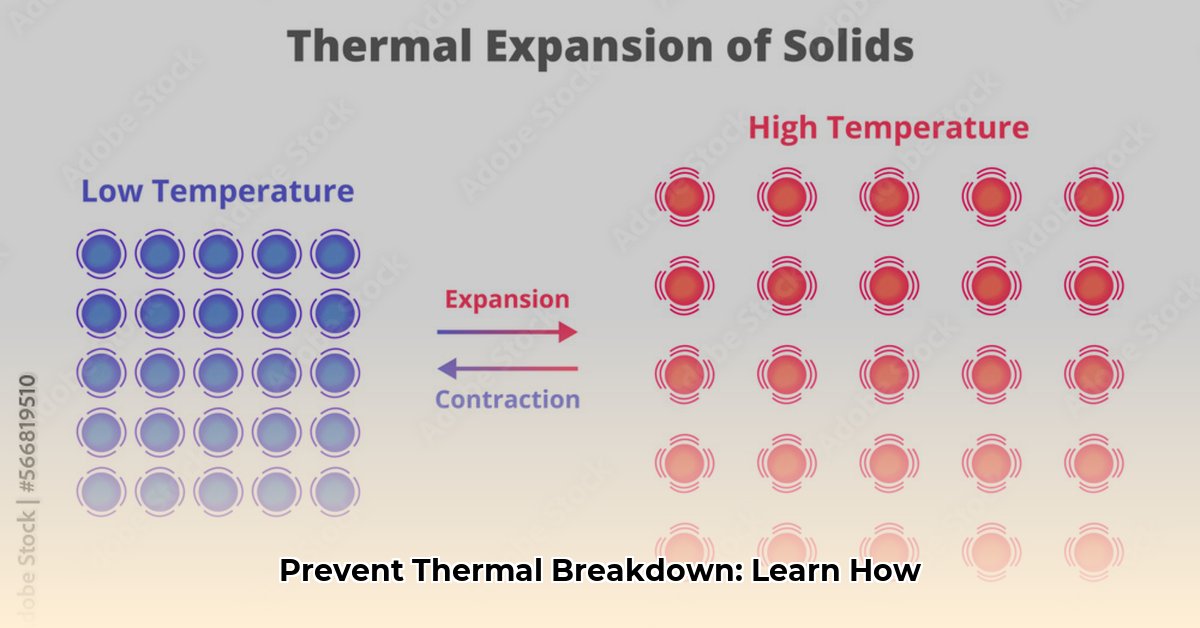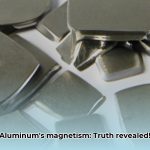Beyond Melting: Unraveling Material Failure at High Temperatures
Many assume that materials simply melt when exposed to high temperatures. However, the reality is far more nuanced. This guide delves into the fascinating world of thermal breakdown, exploring the intricate mechanisms that cause materials to fail under thermal stress, going far beyond the simple concept of melting. Understanding these processes is crucial in diverse fields, from designing robust electronics to ensuring the safety of spacecraft.
Deconstructing Degradation: How Heat Dismantles Materials
Molecular Mayhem: The Mechanisms of Decay
At a molecular level, heat induces a variety of destructive processes. In polymers, like plastics, heat can cause the long molecular chains to break apart (chain scission), reducing the material’s strength and flexibility. These chains may also unravel from their ends (depolymerization) or lose side groups, further compromising the material’s integrity. Metals, while seemingly impervious, can suffer structural changes at high temperatures. Their internal crystal structure may shift, softening and weakening the material. Oxidation, a chemical reaction with oxygen, can also corrode metals, much like rust slowly eats away at iron. Even ceramics, known for their heat resistance, can undergo phase changes at extreme temperatures, altering their crystalline structure and potentially causing cracking.
The Degradation Equation: Factors Influencing Breakdown
Temperature, while the primary driver, is just one piece of the puzzle. The duration of exposure plays a significant role, with prolonged exposure even at moderate temperatures potentially causing substantial damage. The surrounding environment is also critical. Oxygen accelerates oxidation, while moisture and other reactive substances can exacerbate degradation. The material’s inherent composition, including its chemical structure and any additives, dictates its vulnerability to these various degradation mechanisms. This complex interplay of factors makes predicting a material’s response to heat a challenging endeavor.
The Domino Effect: Consequences of Degradation
The effects of thermal degradation range from noticeable changes like discoloration, cracking, and loss of strength, to more subtle, microscopic alterations in chemical properties or mass. These seemingly minor changes can have significant consequences, potentially leading to catastrophic failures in critical applications. For instance, the gradual weakening of a component in an aircraft engine due to prolonged exposure to high temperatures could have disastrous results.
Holding Back the Heat: Prevention Strategies
Fortunately, we’re not defenseless against thermal breakdown. Strategic material selection is paramount, prioritizing materials with inherent thermal stability. Additives, such as heat stabilizers and antioxidants, can act as protective agents, inhibiting the chemical reactions that lead to degradation. Protective coatings provide a physical barrier against harsh environments, shielding the material from the elements. Controlling the atmosphere during manufacturing processes can also minimize exposure to reactive substances, slowing down the degradation process.
Unveiling the Invisible: Measuring Degradation
Scientists employ a range of analytical techniques to detect and quantify thermal degradation. Thermogravimetric analysis (TGA) measures weight loss as a function of temperature, providing insights into decomposition processes. Differential scanning calorimetry (DSC) tracks heat flow, revealing phase transitions and chemical reactions. Dynamic mechanical analysis (DMA) assesses changes in mechanical properties, offering a practical understanding of how a material’s performance degrades under thermal stress.
Thermal Breakdown in Action: Real-World Examples
Thermal degradation is a pervasive phenomenon, impacting numerous aspects of our lives. The yellowing and cracking of plastics exposed to sunlight, the intense heat experienced by spacecraft re-entering the Earth’s atmosphere, and the fire resistance of building materials are all manifestations of thermal breakdown. Understanding these processes allows us to design more durable and reliable products, ensuring safety and performance in demanding applications.
The Electrical Connection: Thermal Breakdown in Dielectrics
The Dielectric Dilemma: When Insulation Fails
Dielectric materials, crucial for electrical insulation, face unique challenges under thermal stress. Even a small leakage current can generate heat within the dielectric. In the presence of alternating current (AC), the constantly changing electric field causes molecular vibrations, further increasing heat generation (dielectric loss). This heat, if not effectively dissipated, can lead to a dangerous feedback loop. As the temperature rises, the dielectric’s conductivity increases, allowing more current to flow and generating even more heat. This “thermal runaway” can ultimately result in catastrophic breakdown.
Influencing Factors: A Delicate Balance
The susceptibility of a dielectric to thermal breakdown hinges on several factors. Material thickness, while seemingly protective, can actually hinder heat dissipation beyond a certain point. The type of voltage also matters, with AC causing more dielectric loss than DC. Within AC, higher frequencies exacerbate heat generation. Inherent material properties are equally important. A higher electrical conductivity increases the risk of thermal runaway. The loss angle indicates how much electrical energy is converted to heat—a higher loss angle means more heat. Thermal conductivity, conversely, indicates how well a material dissipates heat—a higher value reduces the risk of breakdown. Specific heat reflects how much heat a material can absorb before its temperature rises significantly—a higher specific heat offers greater thermal stability.
| Factor | Impact on Thermal Breakdown |
|---|---|
| Thickness | Can increase or decrease risk depending on optimal thickness |
| AC Voltage | Increased risk compared to DC voltage |
| Frequency | Higher frequency = higher risk |
| Conductivity (σ) | Higher conductivity = higher risk |
| Loss Angle (δ) | Higher loss angle = higher risk |
| Thermal Conductivity (k) | Higher thermal conductivity = reduced risk |
| Specific Heat (Cv) | Higher specific heat = reduced risk |
Material Matters: Tailoring Dielectrics for Thermal Stability
Different materials exhibit varying responses to thermal stress. Polymers, commonly used as insulators, often have lower thermal conductivities, making them more susceptible to breakdown. Ceramics generally possess better thermal conductivity and perform well at higher temperatures. Metals, despite being excellent conductors, can withstand even more extreme temperatures before failing. Selecting the right material is paramount.
Combating Breakdown: Mitigation Strategies
Preventing thermal breakdown in dielectrics involves a multi-pronged approach. Choosing materials with high thermal conductivity and low loss angles is the first line of defense. Implementing efficient cooling systems can effectively dissipate heat, preventing thermal runaway. Optimizing operating parameters, such as voltage and frequency, can also significantly reduce the risk of breakdown.
Looking Ahead: The Future of Thermal Management
Research in thermal management is constantly evolving. Scientists are exploring the potential of nanomaterials, which often exhibit enhanced thermal properties. Advanced modeling techniques are enabling more accurate predictions of thermal behavior, leading to improved designs and material selection. Ongoing research may unlock new possibilities for enhanced thermal stability, with implications for various industries, from energy production to electronics.
Conclusion: Mastering Thermal Breakdown
Understanding thermal breakdown is essential for designing robust and reliable products. By considering the intricate mechanisms involved, the factors influencing degradation, and the practical implications across various industries, we can develop effective strategies for preventing material failure under thermal stress. Ongoing research suggests that our understanding of this complex phenomenon will continue to evolve, leading to even more innovative solutions in the future.
- Vertical Axis Wind Turbine Design: Improving Efficiency and Overcoming Limits - October 29, 2025
- Wind Turbine to Power Home: Nacelle Design Improvements Advance - October 26, 2025
- Wind Turbine Blade Length: How Long Is Too Long? - October 24, 2025
















